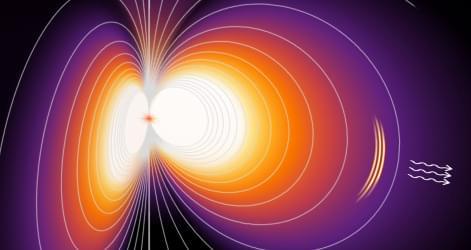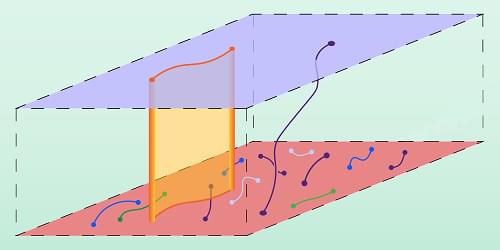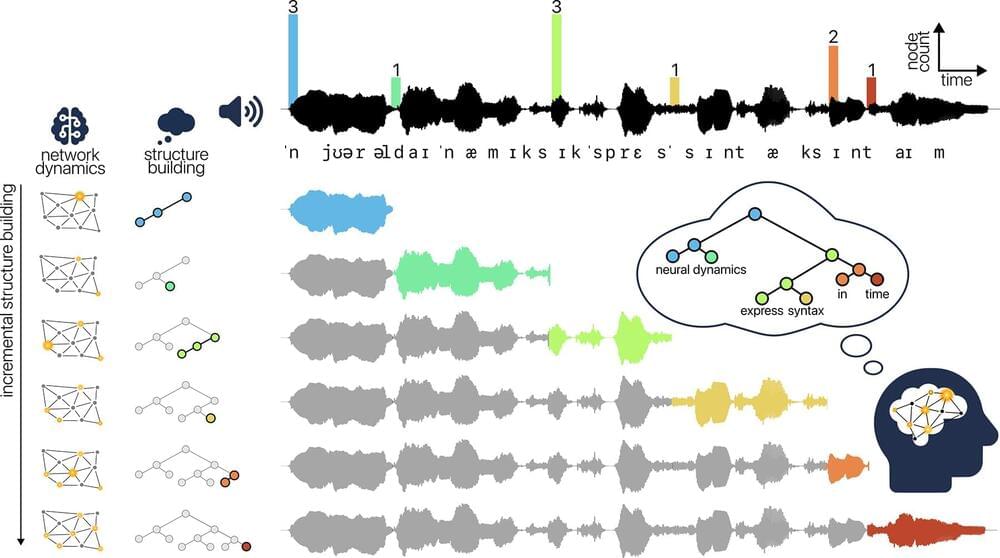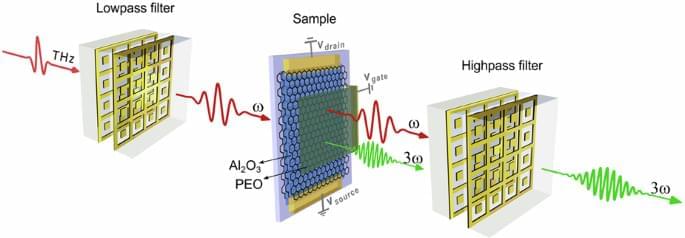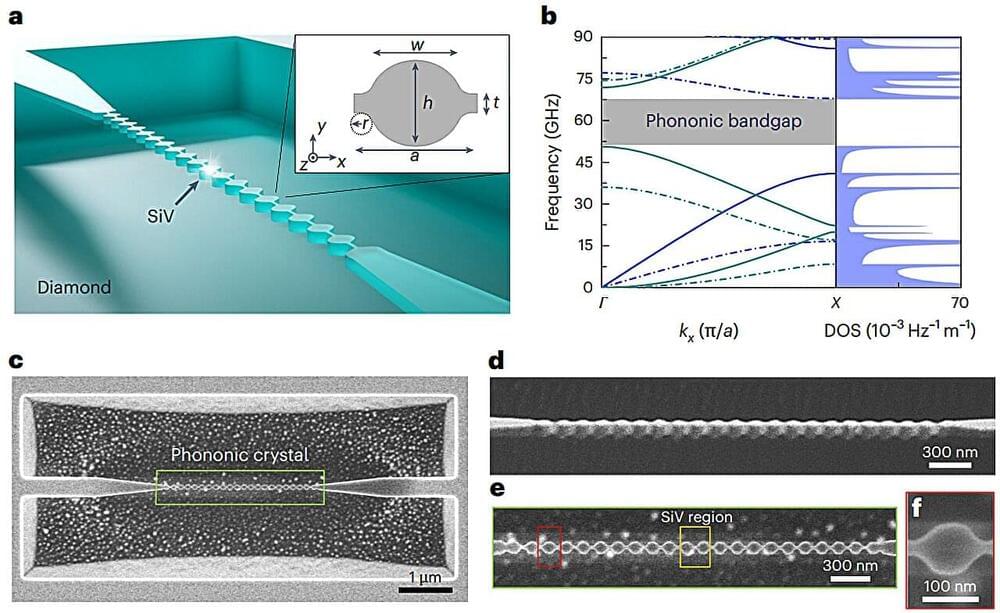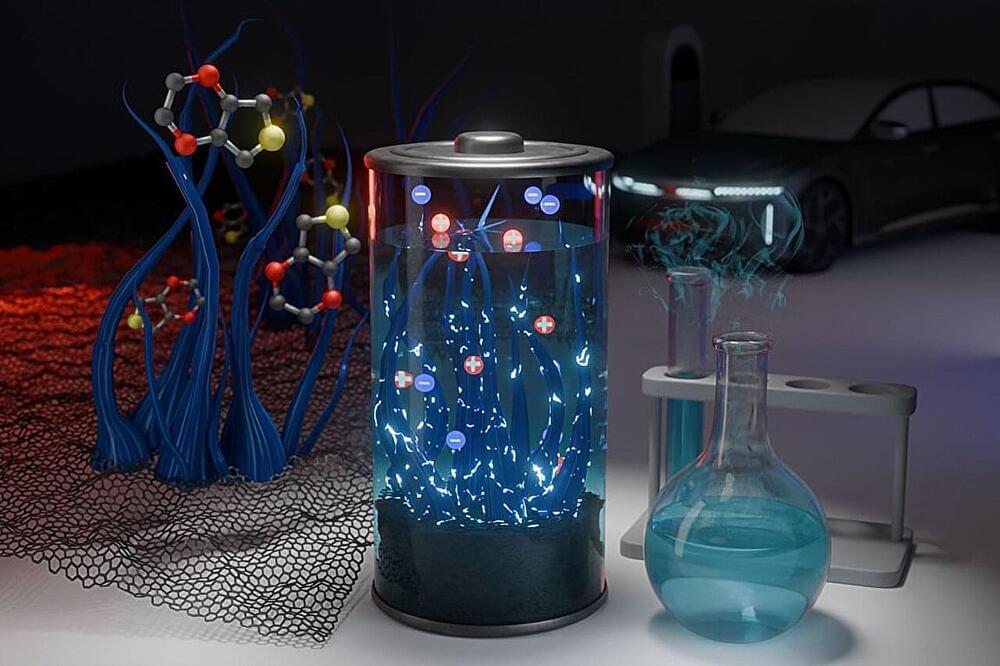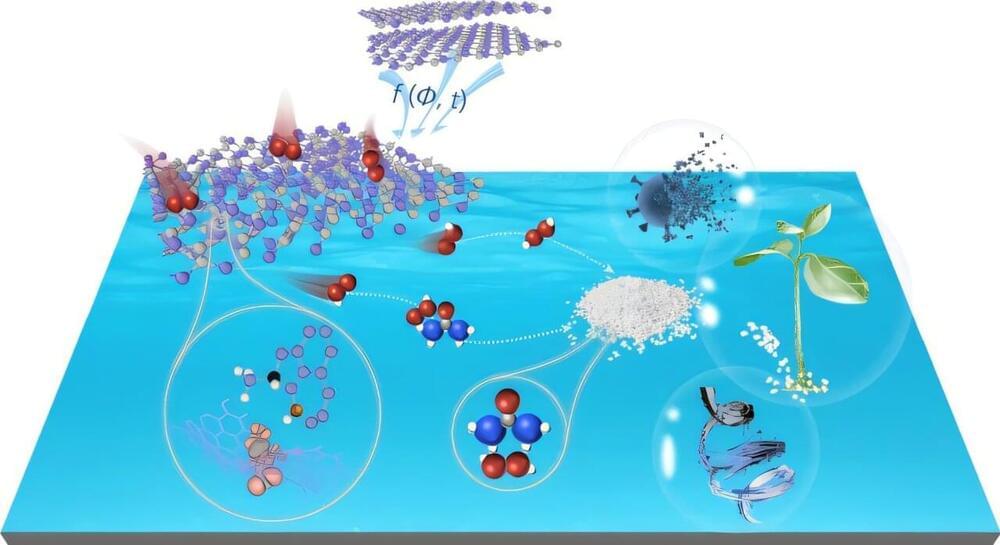Researchers predict that having extra sets of chromosomes can both speed up and slow down the evolution of an organism, depending on the organism’s “fitness landscape.”
Fast radio bursts (FRBs) are short blasts of radio waves whose origins remain a mystery. A new theoretical study explores a possible source in the atmospheres around highly magnetized neutron stars called magnetars [1]. Using numerical simulations, the researchers show that magnetar atmospheres can host powerful shock waves—or “monster shocks”—that produce gigahertz-frequency emissions, consistent with FRB observations.
The first reported observation of an FRB was in 2007, and since then astronomers have collected over a thousand bursts from across the sky. They seem to be connected to compact objects—such as neutron stars or black holes—located at large distances from Earth. “We know that they are cosmological, but their origin and production mechanism remain elusive,” says Arno Vanthieghem from Sorbonne University and the Paris Observatory. He and Amir Levinson from Tel Aviv University, Israel, have explored a possible connection between FRBs and magnetically driven shocks around magnetars.
Previous work has looked at FRB-producing mechanisms around magnetars, but Vanthieghem and Levinson are the first to explore shock-induced radio emission in the inner magnetosphere—the strong-magnetic-field region surrounding a magnetar. The researchers showed that a disturbance, such as a starquake occurring on the magnetar surface, can cause a magnetic-field wave to travel outward through the charged particles in the magnetosphere. They found that this wave can be amplified into a monster shock in which charged particles reach highly relativistic speeds. These particles emit a burst of radio waves that could be seen as an FRB by a distant observer. Vanthieghem says that future observations might be able to provide evidence for this mechanism by pinpointing the location of FRB emission within a magnetar’s environment.
Three theoretical studies have uncovered novel types of topological order inherent in open quantum systems, enriching our understanding of quantum phases of matter.
Nature showcases an extraordinary diversity of phases of matter, including many that can be understood only through the principles of quantum mechanics. Such quantum phases can exhibit topological order, characterized by long-range quantum correlations and exotic quasiparticle excitations. Despite extensive theoretical and experimental exploration over the past few decades, our knowledge of topological order has been largely restricted to closed quantum systems. However, real-world quantum systems are inevitably influenced by dissipation and decoherence, underscoring the need for a deeper understanding of open quantum systems—those that exchange energy, particles, or information with their surroundings. Now three research teams have identified new forms of topological order intrinsic to open quantum systems, expanding the spectrum of possible quantum phases and paving the way for advances in quantum information science [1– 3].
Conventionally, different phases of matter are classified based on symmetry. For example, ferromagnets break rotational symmetry since their magnetic moments align in a specific direction, even though the underlying physical laws remain invariant under spatial rotation. While this concept of spontaneous symmetry breaking has proven valuable, the past few decades have seen a new paradigm: topological phases of matter. Representative examples of these phases, such as fractional quantum Hall fluids and quantum spin liquids, display topological order [4]. This property does not arise from spontaneous symmetry breaking but from an intricate pattern of entanglement—nonlocal correlations central to quantum physics.
Trees need a certain number of warm days in their growing seasons to grow properly; otherwise, the cell walls of new growth don’t lignify properly, creating blue rings that appear when wood samples are dyed.
Since trees and shrubs can live for hundreds of years, identifying these blue rings allows us to spot cold summers in the past. By looking at pine trees and juniper shrubs from northern Norway, scientists identified two extremely cold summers in 1902 and 1877, possibly caused by the eruptions of Mount Pelée on the island of Martinique and Cotopaxi in Ecuador.
“Blue rings look like unfinished growth rings, and are associated with cold conditions during the growing season,” said Dr. Agata Buchwal of Adam Mickiewicz University, Poland, lead author of the article in Frontiers in Plant Science.
Do speakers of different languages build sentence structure in the same way? In a neuroimaging study published in PLOS Biology, scientists from the Max Planck institute for Psycholinguistics, Donders Institute and Radboud University in Nijmegen recorded the brain activity of participants listening to Dutch stories. In contrast to English, sentence processing in Dutch was based on a strategy for predicting what comes next rather than a “wait-and-see” approach, showing that strategies may differ across languages.
While listening to spoken language, people need to link abstract knowledge of grammar to the words they actually hear. Theories on how people build grammatical structure in real time are often based on English. In sentences such as “I have watched a documentary,” the noun “documentary” immediately follows the verb. However, in Dutch sentences, the word order may be reversed: “Ik heb een documentaire gezien” (“I have a documentary watched.”).
“To find out whether speakers of different languages build grammatical structure in the same way, it is important to look at languages that differ from English in such interesting respects,” says first author Cas Coopmans. “Findings based on English may not generalize to languages that have different grammatical properties, such as Dutch.”
The experimental configuration is shown schematically in Fig. 1. Sensitive detection of the THG signal requires the use of a lowpass filter (LPF), reducing the spectral width of the pump pulse and eliminating any residual pump at the third harmonic frequency. After the generation of the THG inside the graphene-based sample, a highpass filter (HPF) is used to limit the incident pump reaching the detection scheme. Although the HPF used in our experiment does not completely eliminate the pump, it still reduces the pump-induced noise at the third harmonic frequency to a value close to the noise floor. This technique relying on a HPF significantly increases the sensitivity of time-resolved detection to monitor the creation of new spectral components24,29. The general design of these filters are described in previous work31 and their spectral transmission properties are shown in Section 2 of the Supplementary Information. In brief, the LPF transmits multicycle THz pump pulse centered at the frequency, ω = 0.8 THz, and strongly attenuates (∼ 50 dB) spectral components beyond 1.5 THz. The HPF attenuates the pump pulse by 30 dB while transmitting the third harmonic at 3ω
We investigate six nonlinear samples consisting of stacked graphene sheets, from 1 to 15 layers, allowing us to vary the nonlinear interaction length. Figure 2a shows the spectrum of the THz pulse (blue line) transmitted through the LPF and used as the pump at the fundamental frequency ω. This graph only contains spectral measurements collected with the 1-, 3-, and 6-layer graphene samples (purple, green and red lines, respectively) for enhanced clarity of the display. A distinct THG spectral peak at 3ω = 2.4 THz can be observed with an intensity increasing roughly quadratically with the number of graphene layers (see Sections 1 and 3 in the Supplementary Information). The HPF, which role is to decrease the residual pump, allows the noise level at frequencies beyond 1.5 THz to settle close to the noise floor (grey shaded area), enabling sensitive monitoring of the nonlinear effects. Figure 2b shows the time-resolved multicycle pump pulse (blue line) with a peak amplitude of 32 kV/cm.
Phonons, the quantum mechanical vibrations of atoms in solids, are often sources of noise in solid-state quantum systems, including quantum technologies, which can lead to decoherence and thus adversely impact their performance.
Strategies to reliably control phonons and their interactions with quantum systems could help to mitigate the adverse effects of these vibrations on the systems.
Researchers at Harvard University and other institutes have introduced a new approach to control the interactions between high-frequency phonons and single solid-state quantum systems. Their proposed method, outlined in a paper published in Nature Physics, relies on new diamond phononic crystals that they designed and fabricated, which can be used to engineer the local density of states in a host material.
Microscale light-emitting diodes (micro-LEDs) are emerging as a next-generation display technology for optical communications, augmented and virtual reality, and wearable devices. Metal-halide perovskites show great potential for efficient light emission, long-range carrier transport, and scalable manufacturing, making them potentially ideal candidates for bright LED displays.
However, manufacturing thin-film perovskites suitable for micro-LED displays faces serious challenges. For example, thin-film perovskites may exhibit inhomogeneous light emission, and their surfaces may be unstable when subjected to lithography. For these reasons, solutions are needed to make thin-film perovskites compatible with micro-LED devices.
Recently, a team of Chinese researchers led by Professor Wu Yuchen at the Technical Institute of Physics and Chemistry of the Chinese Academy of Sciences has made significant strides in overcoming these challenges. The team has developed a novel method for the remote epitaxial growth of continuous crystalline perovskite thin films. This advance allows for seamless integration into ultrahigh-resolution micro-LEDs with pixels less than 5 μm.
It’s become increasingly clear that the gut microbiome can affect human health, including mental health. Which bacterial species influence the development of disease and how they do so, however, is only just starting to be unraveled.
For instance, some studies have found compelling links between one species of gut bacteria, Morganella morganii, and major depressive disorder. But until now, no one could tell whether this bacterium somehow helps drive the disorder, the disorder alters the microbiome, or something else is at play.
Harvard Medical School researchers have now pinpointed a biologic mechanism that strengthens the evidence that M. morganii influences brain health and provides a plausible explanation for how it does so.
A team of chemists and agriculture specialists has developed a way to transform urea in wastewater, into percarbamide, which can be used as a fertilizer. In their paper published in the journal Nature Catalysis, the group describes their process and how well the resulting product worked in growing edible crops.
Urine is seen as a source of fertilizer because it is high in nitrogen and other rich compounds that are good for plant growth. Many home gardeners know that urine can be used as a fertilizer both for flower and vegetable gardens—the key is to mix it with a lot of water to prevent burning the plants.
Prior efforts to use urine as a source of fertilizer on a larger scale, however, have proven to be unfeasible due to industrial inefficiencies; it is much easier to use standard methods that involve extracting nitrogen from the air. In this new effort, the researchers have developed a way to use human and animal urine as a fertilizer for growing edible crops.

